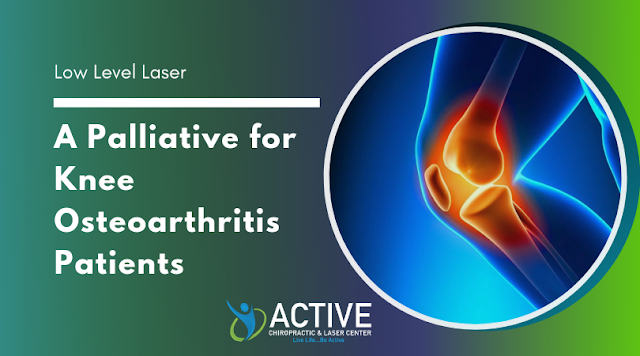An innovative form of pain relief for knee osteoarthritis (KOA), in which joints become extremely painful, is known as low level laser therapy (LLLT). A study by medical experts in Hungary compared LLLT with a placebo, finding that pain relief was much more significant with the LLLT group than the placebo group. The 2009 study, headed by Bela Hededus, M.D. of the Balneotherapy Center in Hungary, also found that LLLT improved microcirculation in irradiated areas. The following information summarizes various LLLT research on KOA patients.
Causes of Osteoarthritis
Knee osteoarthritis usually occurs in knees that have experienced injury, infection, or trauma. Articular cartilage, which is a smooth, slippery, and fibrous connective tissue is a protective cushion between bones. As the cartilage begins to deteriorate or is lost, osteoarthritis sets in. The joint space between the bones narrows as the articular cartilage is lost. Over the years, the joint changes slowly. In cases that become severe, after the articular cartilage is lost, the thickened bones end up rubbing against each other and start wearing away. Thus, deformity in the joint develops, making normal activity painful and difficult.
Knee Osteoarthritis Diagnosis: How It's Done?
The diagnosis of knee osteoarthritis can be done in two ways: by patient-reported symptoms, such as pain or disability, or actual physical signs, like changes in the joint as seen on x-rays. In most of the cases, both patient-reported symptoms and pathology are present. Knee osteoarthritis evaluation includes complete patient history and a physical examination.
Laser for Knee Osteoarthritis Patient- LLLT Origins
Hungarian physician, Endre Mester, began experimenting with lasers in 1967 as a treatment for skin cancer at Semmelweis University in Budapest. He became a pioneer in low power laser surgery. He went on to publish several articles about his research in this field. Since then, this type of treatment has been controversial in the medical industry as to its effectiveness and has yet to be approved by the FDA.
Research Details
The 2009 study began with 35 patients but only 27 of them completed the study, consisting of 22 women and 5 men. The active LLLT group had 18 patients while the placebo group had 9 patients, in which 8 abandoned the study without an explanation. Over a four-week period, LLLT patients were given treatment on painful knee joints twice a week. Patients were not allowed to consume coffee, alcohol, or cigarettes prior to testing, since these substances can affect circulatory conditions.
Conclusions
Pain relief was sustained for two months with the LLLT group. In the past, over 100 double-blind studies using control group comparisons have been conducted and published on low-level laser therapy. The consensus from these studies has pointed toward an anti-inflammatory effect and that LLLT is helpful in reducing pain for KOA patients, at least in the short term.

